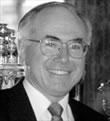I am pleased to announce $20 million in grants under Tough on Drugs
for community organisations to provide treatment, rehabilitation
and support for those affected by drugs.
The funding is part of $290 million committed to the Tough on Drugs
plan, and will go to more than 50 voluntary and community agencies
to run community based services.
I commend the work of the community organisations involved in providing
treatment and support services. They are playing their role in helping
to build a social coalition to address the grave social problem of
illicit drugs.
The key to the Tough on Drugs strategy lies in its partnership
between voluntary and community agencies, churches, schools, parents,
local communities, health professionals, law enforcement officials
and government.
The Government is committed to this partnership and to working harder
than ever to tackle the drug problem on all fronts.
True leadership which responds to community values demands that we
stand up to drugs like never before.
The successful projects include:
- Youth Off The Streets, Ultimo, New South Wales which receives
$750,000 for an intensive 2-4 week residential service for young
adults who have a history of drug abuse.
- The Salvation Army, Adelaide, which receives $375,000 to employ
two Aboriginal workers for a 25 bed sobering up unit for Aboriginal
people.
- Anglicare in Lilydale, Victoria, which receives $474,000 to
support drug users and their families.
Many of the agencies receiving this funding will use it to set up
treatment and support services where gaps or special needs exist in
local communities.
The projects announced today build on the $30 million allocated
in August last year to 68 community agencies for treatment, and to
24 local communities for initiatives such as training and resource
centres.
Tough on Drugs is the largest single initiative ever undertaken
in Australia to respond to the drug problem.
The Government has set aside $150 million so that our law enforcement
agencies have the resources needed to protect our borders and our
streets from the drug menace.
A major education and community information programme is being implemented
with around $40 million committed to school and community education
efforts based on zero tolerance of drugs in schools.
We are sending the strongest possible message to our children to resist
drugs.
At the same time we are extending help to those who need it. Backed
by a $60 million commitment to treatment and rehabilitation, the Government
wants to see all those who have a drug problem, or who are placed
at risk, able to get access to treatment and support.
In addition, the Government is also supporting research, particularly
the important work aimed at finding new ways to treat addiction, while
maintaining its determined stand against risky heroin trials. There
are now 18 medical trials taking place with the aim of finding alternatives
to heroin. These trials are testing LAAM, buprenorphine, naltrexone
and slow -release oral morphine with the aim of helping people break
their addiction.
Although we have made much progress over the past 18 months in tackling
Australia's drug problem, there remains no quick or easy solutions
to illicit drug abuse.
Importantly, the treatment and rehabilitation projects announced today
will extend the reach of treatment services currently available. Those
affected by drug abuse will have more assistance and support available
to help them recover from their addiction and resume a normal healthy
life.
I wish to thank the Australian National Council on Drugs for their
guidance and advice on the implementation of the Tough on Drugs
strategy.
18 March 1999
National Illicit Drug Strategy
Non-Government
Organisation Treatment Grants Program,
Proposals for Funding March 1999
This document also available in the following formats:
* Microsoft Word
* Adobe Acrobat PDF

